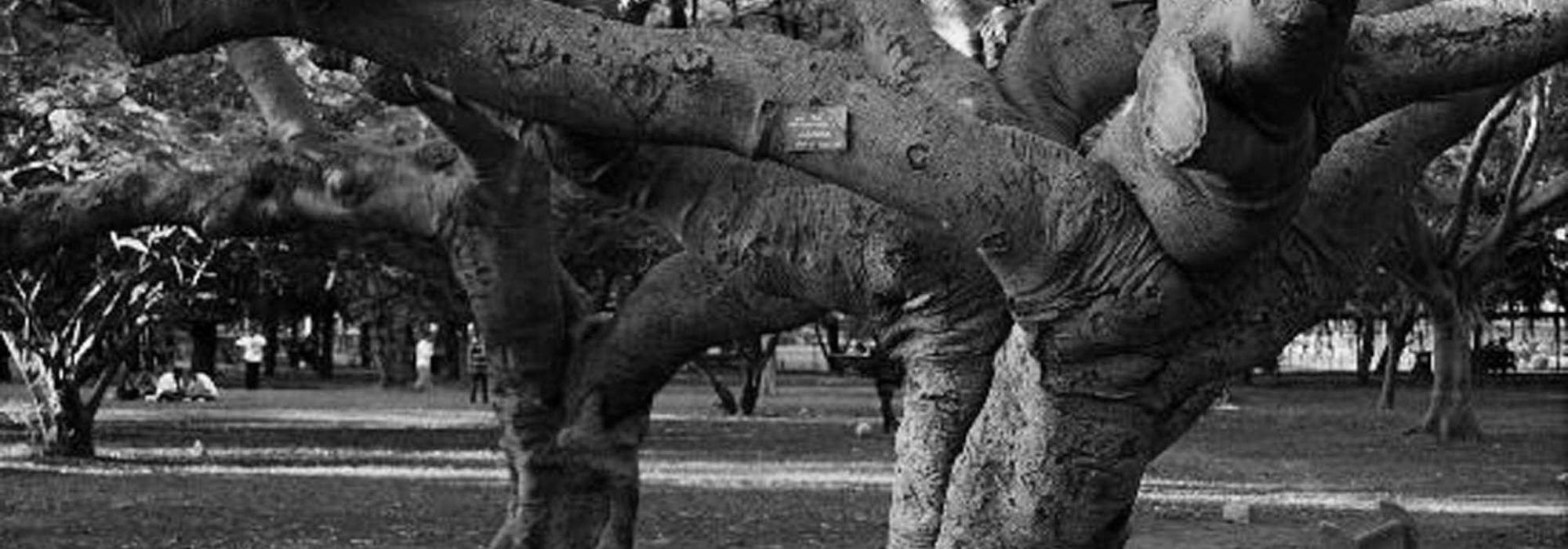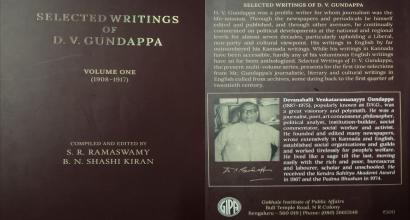I’ve mentioned elsewhere about a couple of other incidents under the tenure of V P Madhava Rao[1] that stirred up people’s minds. The government bringing down the compound wall of Bangalore’s Janopakari Doddanna Shettaru convention hall was one such similar incident. There arose a lot of opposition to this event too. People felt that the government had targeted Doddanna Shetty charitable trust because D Venkataramayya was its trustee and a patron. Overall, V P Madhava Rao’s tenure was unnecessarily an era of commotion. None can question the functional capability of V P Madhava Rao. He was benevolent man and also held a progressive outlook. There were many qualities in him that were fundamental requisites for social service. Yet, he lacked sufficient courteous conduct, which would have won him public affection.
There was no hindrance to the formation of an independent citizen’s organisation during Sir M Vishvesvaraya’s tenure. He wasn’t a person who would oppose it; instead he was a person who would promote them. But the necessity of building such an organisation didn’t spring up strongly enough in the minds of people. Vishvesvaraya’s brainchild, the Economic Conference, an establishment for wealth advancement, had several of its offices, committees, and subsidiaries spread all over the state. Not only every prominent individual of the state but also lesser known and unknown ones were all involved in committees and subsidiaries of this conference one way or another. All of them were generously compensated through travel allowance, daily allowance, and elegant food to an extent that none of them had ever witnessed before. When state is filled with such organisations that deliver plentiful benefits and honour, who then would be keen on building public organisations by devoting their personal funds?
Gopalakrishna Gokhale passed away in 1915. The fength and breadth of India grieved for him. Bangalore too, witnessed a public gathering to express this grief. Karpura Srinivasa Rao presided over this event. Diwan Visvesvaraya bid a tearful adieu to his cordial friend Gokhale by means of a heartfelt speech. Charged by the spark of inspiration of that moment, a few youths got together and toiled to establish the Gokhale Deshaseva Sangha. A bit of work got done as a part of this venture as well. A couple of booklets, a few public meetings, and a couple of night-schools were a few of its initiatives. The drivers of this Sangha too were the same people who worked for the aforementioned organisations. Back then, there were only a handful of people in Bangalore who were willing to roll up their sleeves for such payless adventures – Shama, Seena, Venka, Manka. Whatever be the name of the organisation, its life-crux were these four laymen. Struggles devoted in commemoration of Gokhale’s dynamic name too met its end within a couple of years.
There arose yet another political exposition around 1916-17 called Prajāmitra Maṇḍali. A few months before this, a political organisation called Justice Party was formed in Madras to meet similar type of goals and comprised of members who weren’t brāhmaṇas. The Late Basavaiah sowed the seeds of anti-brahmanical movement in Mysore. He was a native of Mysore and had completed his education there before moving on to practice law in Bellary for while and later moved to Bangalore. Basavaiah, Nawab Ghulam Ahmad Kalami, and M Subbaiah – they were the prominent leaders of this association. Janab Mohammad Abbas Khan too was their colleague along with a few other prominent names. Some of them had previously occupied positions in government services. I was well-acquainted with all four people whose names I’ve mentioned. Basavaiah and I were colleagues while working as members of the Municipal Council. I was friends with Subbaiah from a much earlier period. Both Kalami and Abbas Khan expressed and continued to have great personal relations with me. They had sought my assistance in setting up the Central Mohammedan Association. I’ve personally seen the work they did.
I shall not protest against the fundamental principles of the Prajāmitra Maṇḍali or the Prajāpakṣa. I have wholeheartedly concurred that those principles have elements of value. Those principles are the following.
In a country, or among a people, there should never be a situation where a group of persons or a section of society feels inadequate or lowly, thinking ‘we are backward in comparison with the rest.’ In any society, if there is a circumstance where one of its segments feels that it has not received justice because of the rest, then that inadequacy will be perilous to the society either at that time or prepare the ground for future danger. Even if a single link in a chain wears out, the whole chain is in imminent danger owing to the vulnerability of that one link. Strengths and weaknesses, contentment and displeasures of different sects of a population work like links of a chain. Even if a slightest discontentment shows up within a group of people – whatever its cause may be, whether it’s right or wrong – then it’s an inherent duty for anyone who wishes well for the society to carry out an acute examination of its root cause and to reconcile the issues through an appropriate setup. I believe this is a prudent approach.
It not just one strand bearing the load of political administration, but a braid of an interwoven system of reasoning and philosophy. The need to uplift the weaker sections also carries other handful of requirements along with it. A thriving population shouldn’t be pulled back in a haste to drive the weaker sections forward – this is an equally important precondition. The ultimate necessity, however, is to ensure that there’s no room for even the minutest of deficiencies in the quality of service that can possibly be rendered to the national whole in an all-inclusive society that includes forerunners, need-seekers, and the intermediates between them. A fair guideline can be established if all three of these necessities are reconciled in a mutually gratifying sense. Prajamitra Mandali didn’t pay heed to rest of these necessities. It lacked the vision of a comprehensive society. The only disagreement that I had with these friends was to do with their forgetfulness of this reconciling technique. I can’t talk about this organization further. I’m not entitled to it. There are others who can ably write about Prajamitra Mandali and its progeny. My venturing into it doesn’t seem appropriate.
After the Prajamitra Mandali had functioned for a while and established itself in a crystalline form, a few of its members felt the need to establish another body which demonstrated the impact that Prajamitra Mandali had on the people’s mind. Consequently, the Mysore Mahajanasabhe was born sometime during 1918-19 in Bangalore’s Sultanpet, in a building that was B Rudrappa’s home, which also housed a school run by S R Nanjundaswamy. Advocate C Krishnamurthy and M S Puttanna were among the prominent people who took part in the inaugural event. We rented a space in Chikpet to function as its office. This building was a property of Central Muhammadan Association. It was either the fourth or the fifth building on the left (close to Ishwara Temple) side as we walked towards East from the corner of Arcot Srinivasacharlu Road in Chikpet. This commitment went on for two to three years. We usually met there every Sunday. Bahadur K Srinivasarangachar, who had recently retired as the Chief Officer of General Post Office served as the body’s president for a while. Advocate A R Nageshwara Iyer and C Krishnamurthy were among the notables of the day. We often passed resolution on public affairs and sent it to the government. There weren’t many people who were enthusiastic about this work. The support rendered to this organisation either by public or by the government isn’t worthy enough to be disclosed.
Mysore Mahajanasabhe was scheduled to meet every Sunday. But the issue was: what time should the meeting start? Rahukala would have already begun by 4.30 pm – this was Srinivasarangacharya’s concern. Four in the afternoon would be too early. Meanwhile our lawyers were all too busy even on Sundays to find some free time.
We finally arrived at a conclusion after much discussion: We shall begin high tea and snacks at four, which warrants the commencement of events before 4.30pm. It would be half past four by the time formal events begin after summing up the snacks. Since the meet began before half past four, there was no obstacle as far as the Rahukala was concerned.
But the ones who showed up for the feast weren’t to be seen when formal events began. They came up with an excuse to take leave.
Mysore Mahajanasabhe was formally dissolved and the premises was vacated. Mysore Vartaka Sangha then started functioning at the same location and this later graduated to become what’s known today as the Chamber of Commerce.
Mysore People’s Convention held in December of 1919 was by far the largest headway made by Mysore Mahajanasabhe. It witnessed a gathering of about three hundred people representing all regions of the Mysore State. Anyone who was proactive and held a comprehensive outlook about the society was to be found in that convention. Venkatakrishnaiah, C Narasimhaiah, and B Narasigha Rao from Mysore; C Srinivasa Rao and Vasudeva Rao from Chikmagalur; B Subba Rao, S R Balakrishna Rao, and K Shankaranarayana Rao from Shimoga; C B Gopala Rao, M S Ramacharya, and T Srinivasacharya from Kolar; Vekateshaiah and Nanjundaiah from Hassan; L R Nageshvaraiah and M P Somashekhara Rao from Bangalore were among those who took an active part in the proceedings of this event. Rao Bahadur K Srinivasarangacharya presided over the inaugural committee. A report of the Montagu-Chelmsford reforms was published just a couple of days before the scheduled event. This report was thoroughly evaluated and critiqued by Srinivasarangachrya in his speech. Retired Deputy Commissioner Chengaiah Shetty, who presided over the event presented a comprehensive reflection of people’s thoughts in his speech. This conference went on for three days. People’s representatives must be a part of ministerial cabinet; Political freedom and civil rights of general public must be broadened; Policies of Indian governance must be amended to accommodate for co-equal rights and authority of Mysore state as per is its lawfully entitlement – these and a few other resolutions were passed by the Mahasabhe. It also formed a committee to work towards realising its objective and resolutions. People’s convention was the first of its kind to work towards giving an integral form to the political mindset of general public of Mysore State as a whole. There wasn’t a widespread effort of this magnitude ever before. That convention turned out to be extremely successful.
This is the third part of a four-part English translation of the seventeenth chapter of D V Gundappa’s Jnapakachitrashaale (Volume 1) – Sahiti Sajjana Sarvajanikaru. DVG wrote this series in the early 1950s. Thanks to Śatāvadhāni Dr. R Ganesh for his review. Edited by Hari Ravikumar.
Footnote
[1] Vishwanath Patankar Madhava Rao (1850–1934) was an Indian administrator and statesman who served as the Diwan of Mysore from 1906 to 1909 and Baroda from 1910 to 1913.









































